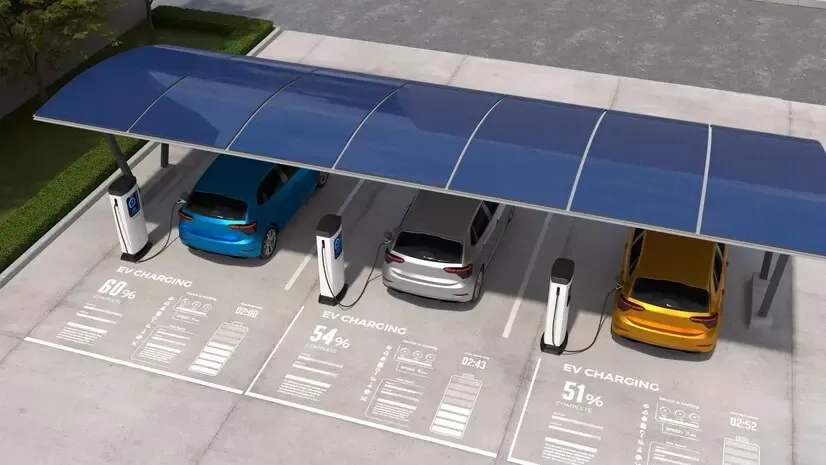Notifications

5 minutes, 52 seconds
-55 Views 0 Comments 0 Likes 0 Reviews

Introduction
As a professional EV charger manufacturer in China, Topper Company delivers dependable electric vehicle charging station equipment and comprehensive charging solutions.
The rapid rise of electric vehicles (EVs) has sparked a growing need for scalable, intelligent charging infrastructure. A key enabler of this ecosystem is the communication protocol that links charging stations to central management platforms. Among the most adopted industry standards is the Open Charge Point Protocol (OCPP) 1.6, which ensures interoperability, flexibility, and innovation across the EV charging landscape.
This article delves into the significance of OCPP 1.6, outlining its core benefits for businesses and charging network operators—and why it remains a foundational protocol in today’s EV infrastructure.
OCPP 1.6 is an open communication standard that governs how EV charging stations interact with Central Management Systems (CMS), also known as Charge Point Management Systems (CPMS). Unlike proprietary protocols that tie users to a single vendor, OCPP 1.6 promotes vendor neutrality, enabling seamless integration between chargers and back-end systems from different manufacturers.
Interoperability
Enables cross-compatibility between hardware and software from multiple vendors, reducing vendor lock-in.
Remote Monitoring & Control
Supports remote diagnostics, charging session management, and over-the-air firmware updates.
Smart Charging
Facilitates load balancing, demand management, and integration with renewable energy sources.
Enhanced Security
Implements improved authentication and encryption over earlier versions.
Scalability
Built to support large networks, making it ideal for commercial and public deployments.
By leveraging OCPP 1.6, operators gain the flexibility to select the most suitable combination of chargers and management software—encouraging innovation and lowering costs.
OCPP 1.6 empowers businesses to:
Mix and match chargers from different manufacturers.
Choose software platforms tailored to their operational requirements.
Switch platforms without replacing hardware.
This interoperability reduces operational constraints and enables long-term cost savings.
EV technology is rapidly evolving. OCPP 1.6 enables forward compatibility with emerging features such as:
Vehicle-to-Grid (V2G): Enabling bidirectional energy flow between EVs and the grid.
Advanced Load Management: Optimizing energy use across multiple stations.
Smart Grid Integration: Participating in demand-response and time-of-use pricing programs.
Operators benefit from:
Remote Troubleshooting: Reducing site visits and downtime.
Real-Time Data: Monitoring sessions, consumption, and revenue.
Flexible Access Options: Supporting RFID, mobile apps, and plug-and-charge capabilities.
OCPP-compliant chargers demonstrate a commitment to sustainability, strengthening brand image.
Retail & Hospitality: Increase customer dwell time and satisfaction.
Workplaces: Attract talent and improve employee amenities.
Fleet Operators: Enhance charging efficiency and electrification goals.
EV charging can be monetized through:
Usage-based pricing (per kWh, per session, or per minute).
Subscriptions or membership tiers.
Advertising partnerships or promotional content on chargers.
Many countries offer financial incentives or require OCPP compliance for public infrastructure funding. Using open standards can unlock rebates, grants, or utility-based support programs.
| Criteria | OCPP 1.6 | OCPP 2.0 |
|---|---|---|
| Adoption | Most widely deployed | Emerging adoption |
| Cost | Generally more affordable | Higher cost due to newer tech |
| Features | Smart charging, remote control | ISO 15118 (Plug & Charge), enhanced security |
| Compatibility | Broad hardware/software support | Still growing support base |
| Recommended for | Most businesses and public stations | Future-focused deployments |
Bottom line: OCPP 1.6 offers the best blend of maturity, flexibility, and affordability for most current charging needs.
OCPP 1.6 is the backbone of today’s smart EV charging infrastructure, supporting interoperability, innovation, and operational efficiency. Businesses adopting OCPP 1.6 can:
Eliminate vendor lock-in.
Enhance customer experience.
Scale infrastructure with future technologies.
Strengthen green credentials and tap into new revenue.
✅ Evaluate Your Charging Needs
Estimate charger quantity, usage patterns, and location requirements.
✅ Select OCPP 1.6-Compliant Hardware
Choose trusted manufacturers that support open standards.
✅ Implement a Scalable CPMS
Ensure smooth integration and long-term system management.
✅ Explore Incentives
Check local or national programs that reward OCPP compliance.
Final Word:
The EV revolution is charging ahead—and OCPP 1.6 is the standard driving its infrastructure. Businesses that adopt this open protocol today will be empowered to scale efficiently, adapt quickly, and thrive in the connected, electrified future.Know more about Google SEO Directory
China EV Chargers EV Charger Manufacturer EV Charging Solutions

